Thus we see that evidence has accumulated in recent years to make acceptable certain facts in connection with the problem of man’s early existence in America. We may now bring these together by way of conclusion. First, there seems to be no longer any question that man was contemporaneous in America with types of animals that are now extinct, or with types that no longer inhabit the particular regions where such associations have been found. Of the latter there are a number that now live in colder environments, either in higher latitudes, or at higher altitudes, or both. Such, for example, is the musk-ox, whose remains have been found as far south as Texas and New Mexico; a caribou-like animal from New Mexico; and remains of a number of other animals suggestive of changed climatic conditions. Invertebrates are found in old lake beds in the Southwest that live today in Boreal and Transitional Life zones. There are deposits, however, in which both northern and southern forms are mingled, indicating narrowed Life zones. The more recent discoveries that indicate such associations have been well-authenticated by scientists invited to examine the evidence on the spot, and this has tended to lend greater credence to some of the earlier “finds” of a similar nature, reported upon from time to time by individual observers.

(Photograph by Barnum Brown, Amer. Mus. Nat. Hist.)
Second, the types of artifacts found in association with extinct animal remains are apparently always one or the other of those types that we have described as Folsom, Yuma, or Folsom-like artifacts. Unfortunately some observers have been misled by the fact that, under certain conditions, these types have been found mingled with later types of artifacts, and without further investigation they have been assumed to be recent also. What is overlooked is that this is due to materials from previously existing higher beds having been brought down to a lower level by erosion and thus mingled with possible older deposits. This does not occur where the overlying deposits are still in place. Further than this, with but few exceptions, explainable on the basis of recent Indians having occasionally picked up one of the earlier types, none of these latter has been found in recent camp-sites, nor in mounds, nor in any situation that geologically does not call for a moderate antiquity, such as in old lake beds, under deep loess and restratified deposits, and in caves below so-called Basket Maker levels. Of the many Folsom-like points, distributed so widely in the United States, while by far the greater majority are found along streams and on terraces, as surface finds, they have also been found associated with extinct animals, and are not found in recent camp-sites, except as a casual occurrence.

It must be noted that none of the extinct animals mentioned seems to have lived on to such a late date as the Basket Makers, since there are no such reported discoveries. In fact, there is stratigraphic evidence in Burnet Cave in New Mexico showing rather definitely that the extinct animals died out before the cave people used the place as a burial chamber.
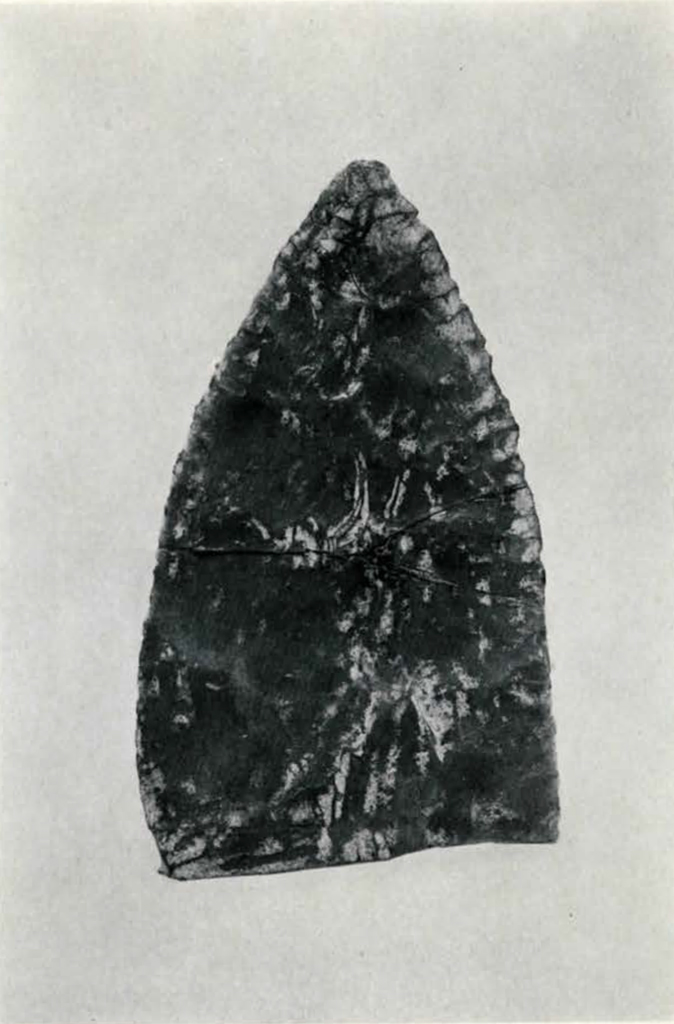
Museum Object Number: 33-36-11
Image Number: 141402
In view of definite cases where artifacts of a “Folsom complex” have been found under conditions of unquestionably earlier age than that of the Basket Makers, we have little hesitation in listing as a fact the occurrence of artifacts in America antedating the Basket Maker. The type of flaking of these artifacts is such that they are easily recognized as differing from other types found. They nearly always show more highly polished surfaces than types known to be recent. Comparing the technique with European standards, they do not appear to be earlier than Late Palaeolithic, which does not mean that they can be classified, therefore, as Late Palaeolithic.
Third, when we come to the skeletal remains of supposedly early people in America, we find that so far none of them has been accepted as other than Homo sapiens, and in most cases there is no radical difference between their remains and those of the American Indian, except that, in the case of the former, skull forms seem to deviate towards dolichocephaly.
Fourth, the Basket Maker, a name many people object to, but after all quite an unimportant objection so long as everybody knows what is meant, lived about the beginning of the Christian Era, and perhaps several centuries earlier. Between this period and “Folsom Man,” if we may use such an expression, is a gap of probably several thousand years, into which should fit some day those people who made various types of artifacts that today are thought to be earlier than those of the Basket Maker, but not so old as the Folsom types. There are several localities from which such artifacts come—Gypsum Cave,135 Nevada; Signal Butte,136 Nebraska; Pinto Basin,137 California, and no doubt others.
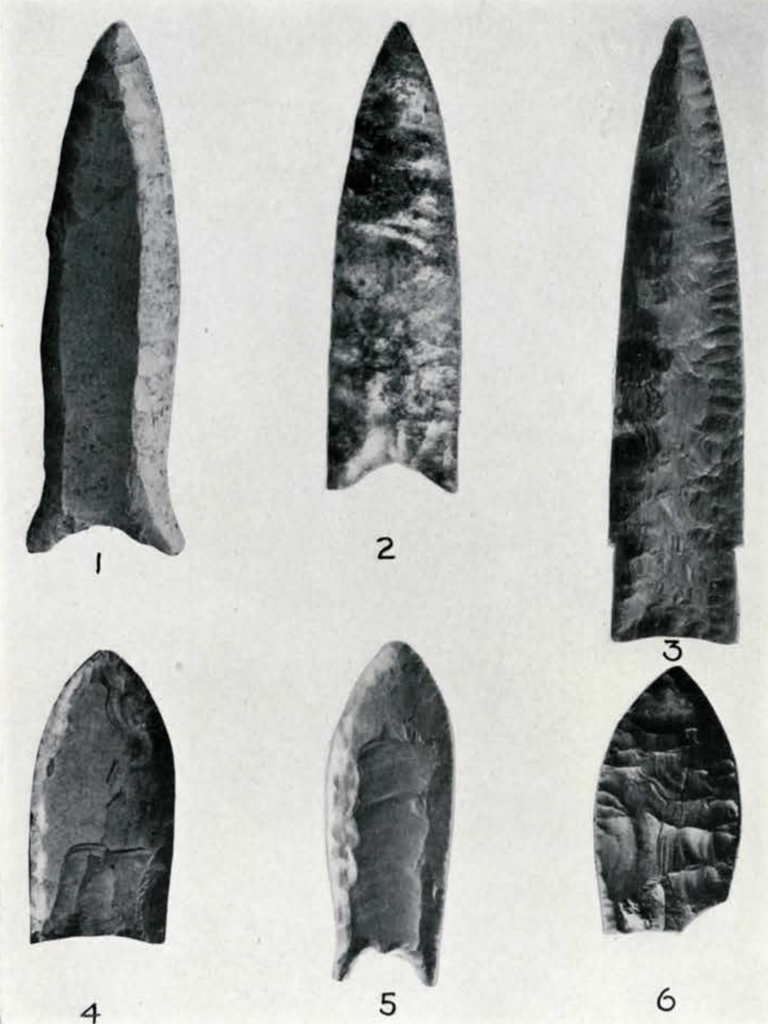
1. Texas; 2. New Mexico; 3. Nebraska (R. R. Langford); 4. Utah (J. H. Steward); 5. Texas (W. C. Fritz); 6. New Mexico. (Natural Size)
Fifth, considering the geological facts, we have seen that man could have come to America by way of Bering Strait with fewer obstacles at certain times than others. We have seen that many phenomena of glacial geology enter as factors into this problem. Oscillations of the ice sheet, particularly towards the close of the Wisconsin, and centres of ice formations that apparently were not contemporaneous, are involved as factors in this problem, and must have played an important part in such migrations as took place at this time.
Neither the geology alone, nor the archaeological and palaeontological associations can fix a definite date for us of the length of time “Folsom Man” has been in America. However, we have tried to bring together the results of converging studies on the part of many scientists, and in trying to establish the age of our “Early Americans” we must bear in mind that any date to be generally acceptable will have to satisfy, first, the physical anthropologists, who have been the chief objectors (for very good reasons) to any theory extending man’s existence in America beyond limits where morphological changes would be expected ordinarily to become operative. Secondly, such a date must satisfy the geological and palaeontological complexities of the problem, and must take account of the ethnologists’ claims for sufficient time to allow for the wide spread of cultures and languages in the Americas. Add the archaeologist to the list, and we find it increasingly difficult to fix, as yet, any definite date for what we have called “Folsom Man.” However, having considered the points of view of investigators of the subject, taken from different angles of approach, we conclude that ten thousand years is the most satisfactory date for the length of time man has been in America.
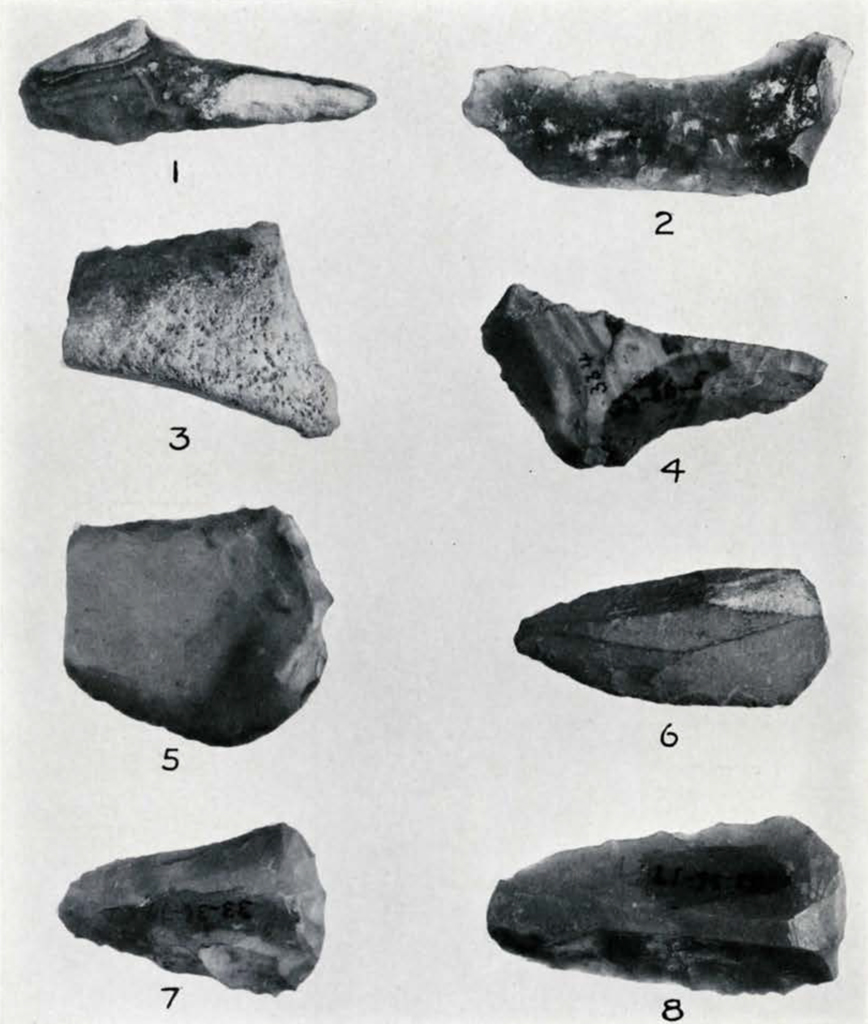
Museum Object Numbers: 33-36-167 / 33-36-8 / 33-36-43 / 33-36-5 / 33-36-148 / 33-36-79 / 33-36-17
Image Number: 13157
Where does ten thousand years put our Early American geologically speaking? According to Antevs, whose time-scale appears to be most generally accepted, “Folsom Man” should prove to belong to a time of the waning Wisconsin ice-sheet—to “Late Glacial” times. He would be¬long to a time very close to that when the temperature reached approximately its present state. Ten thousand years puts man very close to that time when we can say Post-Glacial began. It must have been a time of considerable change of climate, the complex evidences of which we find in geological deposits in unglaciated regions, and in the extinction of many forms of animals that had moved into regions earlier.
Ten thousand years may prove to be too short a time to account for all the observed facts, but it would seem that this minimum figure comes close to meeting the varied points of view of present-day scientific thought upon the subject. Though the figure may be extended as work progresses, this already leaves a gap from about the beginning of the Christian Era to 8,000 B.C., which is still unsatisfactorily filled, and will require much work. We believe that the results of excavating Burnet Cave, and the investigations at Clovis, New Mexico, fit into the picture as it has so far developed, and that the artifacts found at the latter place were made by a hunting people who lived about ten thousand years ago, as were those found below the human burial levels in Burnet Cave. We think that there is good evidence that man lived in America at least that long ago—how much earlier than this we are not prepared to say. Stratigraphic work upon earlier types of artifacts described, and stratigraphy of the Pleistocene animals will help to fill the gap between the known Basket Makers and the people who made the beautiful spearpoints and knives above referred to, but what is needed most is to find “Folsom Man” himself.
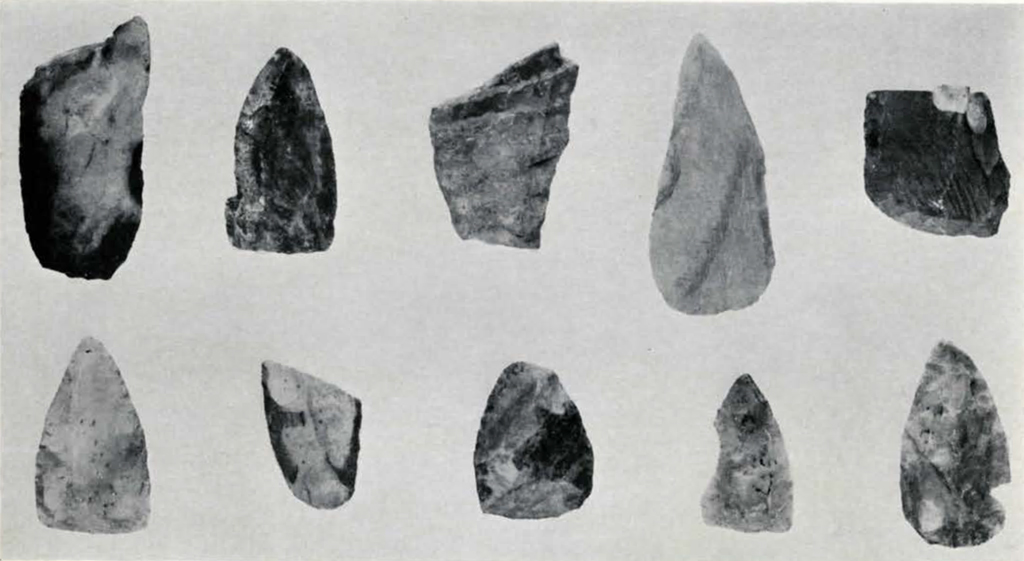
Museum Object Numbers: 33-36-111 / 33-36-113 / 33-36-112 / 33-36-107 / 33-36-109 / 33-36-117 / 33-36-115 / 33-36-108 / 33-36-110 /
Image Number: 141371
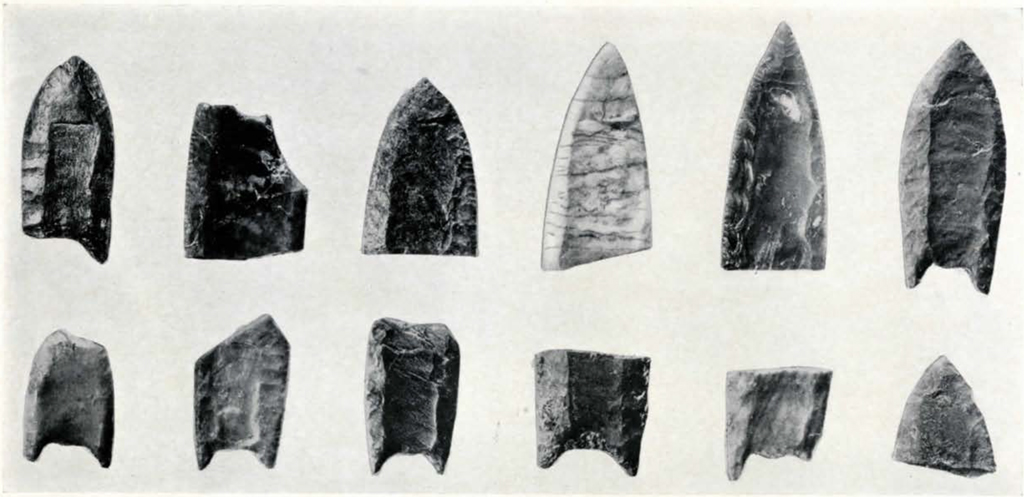
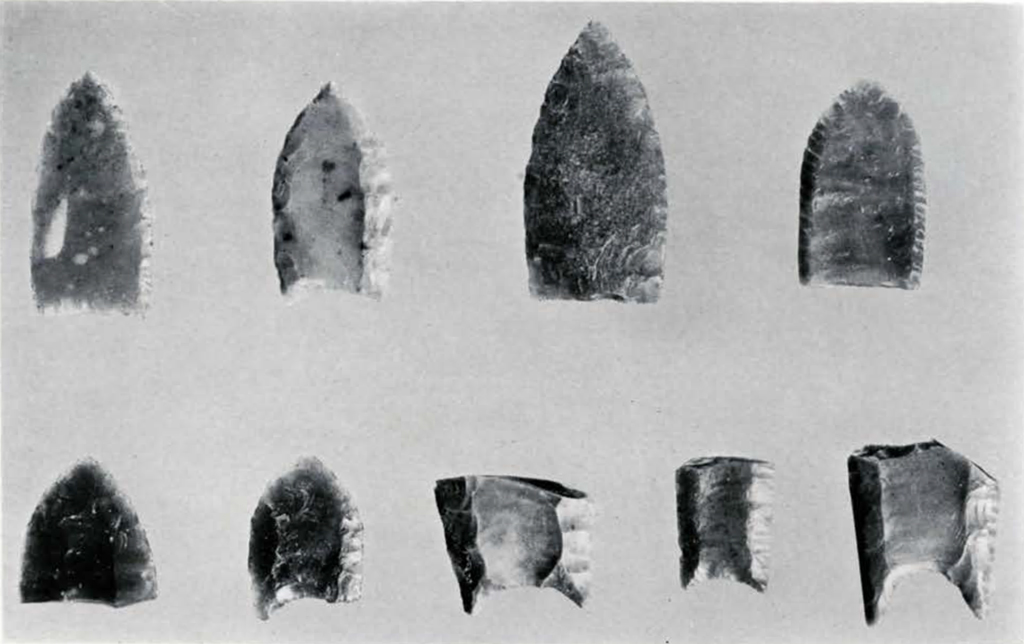
Image Number: 13156
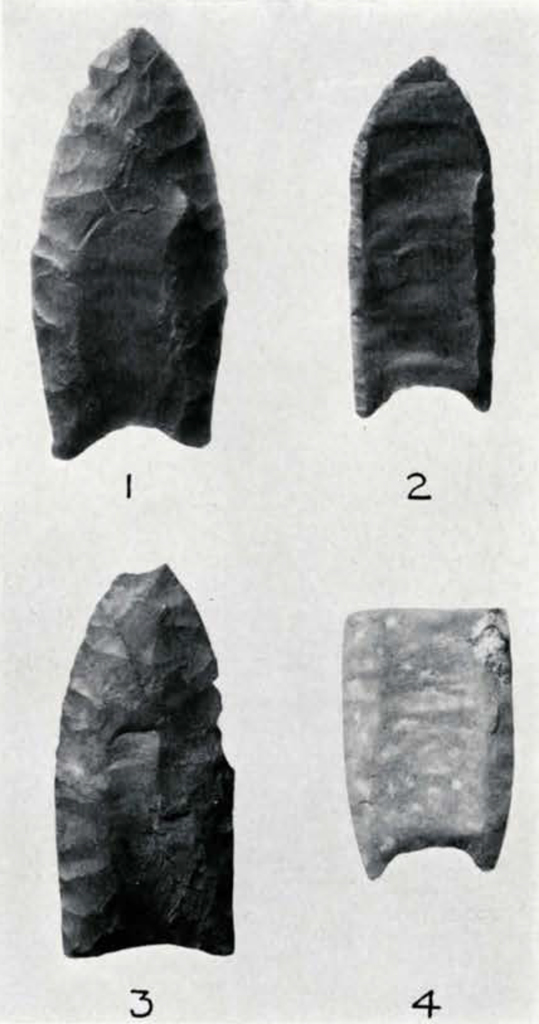
1. New Jersey; 2. Clovis, New Mexico; 3. Burnet Cave, New Mexico; 4. Folsom, New Mexico (Natural Size).

Pennsylvania, New Jersey, Ohio, New Jersey, Mississiippi. (Natural Size)

1. Texas (W. E. Baker); 2. Colorado (Amer. Mus. Nat. Hist.); 3. Clovis, New Mexico; 4. Alabama (De Jarnette). (Natural Size)

1, 2, 3. Colorado (R. E. Hooyer); 4. New Mexico. (Natural Size).

Clovis, New Mexico. (Natural Size)
Museum Object Numbers: 33-36-15 / 33-36-14 / 33-36-2
Image Number: 13153
135 Harrington, 1933. ↪
136 Strong. 1933. ↪
137 Campbell, E. and W., 1935. ↪

